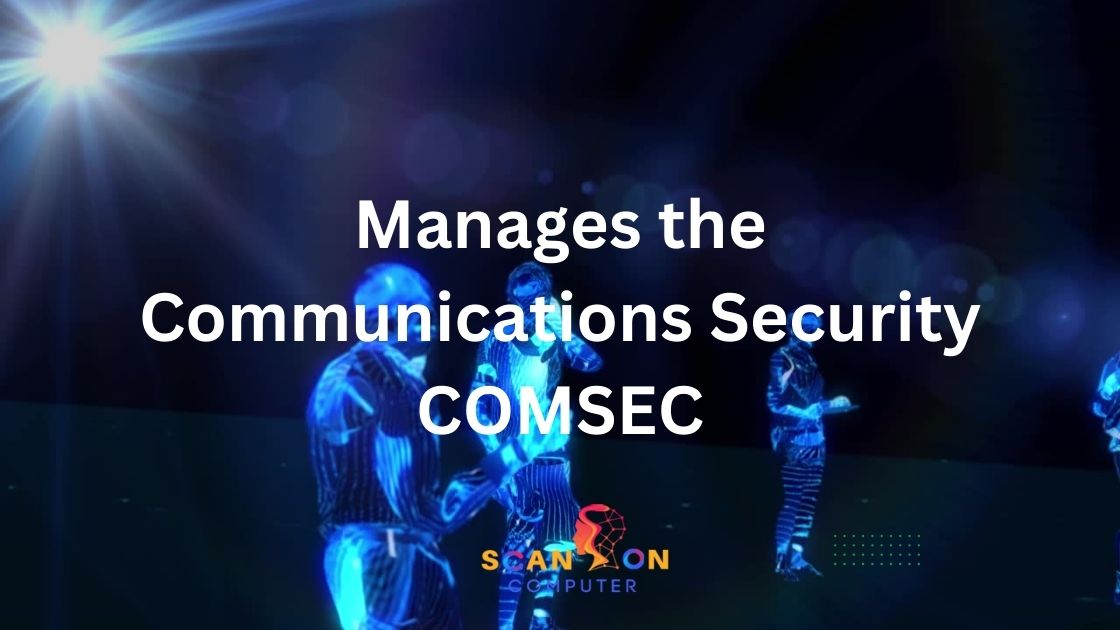Communications Security Management Solutions: ComSEC
COMSEC is widely utilized across healthcare systems, financial networks and military operations – helping safeguard national security while protecting individual privacy.
Defining COMSEC
COMSEC is an information assurance component which addresses measures designed to deny unauthorised individuals access to communications networks and systems. It protects both classified and unclassified communication systems, equipment and transmissions – as well as keying material – including cryptographic security, transmission security emissions security and physical protection of materials used within them.
A Communications Security and Management Systems (COMSEC) manager is typically defined as an individual who oversees communications security resources within an organization or acts as key custodian for a Crypto Key Management System (CKMS). They must ensure all devices and keying material used by COMSEC users are accounted for and controlled at all times; including developing appropriate programs to ensure operational availability during crisis situations or contingencies. Finally, managers are accountable for ensuring users receive appropriate training; including certification where applicable.
While COMSEC is essential in many sectors, government and military organizations in particular benefit greatly from it. This is because COMSEC can protect sensitive data by keeping adversaries from intercepting and deciphering it during tactical operations or intelligence gathering. Furthermore, COMSEC helps secure customer data and transactions to protect both financial transactions as well as protect customer identities.
Army COMSEC managers are accountable for devising, testing, procuring, fielding and maintaining cryptographic solutions to secure Army networks at every level from tactical through enterprise – this includes identifying emerging technologies that provide scalable yet secure network architecture that enables forces to keep current capabilities and meet future requirements.
Kevin Younkin, an 341st Operations Support Squadron security specialist based out of Fort Carson in Colorado, makes COMSEC part of his daily routine. Together with his fellow security specialists at 341st OSS he strives to protect classified documents and information during wartime, peacetime and contingency operations; their efforts are recognized with awards at the wing level for their efforts.
Implementing COMSEC
Implementation of COMSEC can be complex and involves using various technical, operational, and physical safeguards that apply to communications equipment – this may include cryptographic security, transmission security, emissions security and physical safeguards applied to aids and hardware belonging to COMSEC aids and hardware. As part of information assurance practices COMSEC involves measures taken to restrict unauthorized persons accessing government transmitted telecommunications while assuring authenticity of such communications.
In addition to protecting telecommunications data, COMSEC also safeguards physical systems supporting communication networks such as servers, computers and other hardware. Utilizing encryption and access control techniques, this helps prevent unauthorised individuals from intercepting sensitive information during transmission while also helping avoid the loss of critical infrastructure components. COMSEC plays a significant role across a range of industries such as military, government and financial institutions.
Implementing COMSEC requires a centralized management system capable of tracking and protecting classified devices, encrypted keys and other materials used in its implementation. The Electronic Key Management System (EKMS), administered by the DoD’s Logistics Support Systems Division, serves as this central repository and distribution point. EKMS features automated computerized functionality capable of ordering, production, distribution storage accounting access control of COMSEC materials; its Advanced Central Equipment System (ACES) counterpart provides frequency management and crypto-net planning capabilities.
Kevin Younkin, a security specialist with the 341st Operations Support Squadron, makes sure classified documents are accountable. Younkin works hard to make sure missileers do not leak secrets and information ends up with those who should not possess it.
Existing COMSEC account holders should address any inquiries or issues with their manager; those without yet owning an account can obtain more information about creating one through the Departmental Custodial Office; for those requiring modern keys they can fill out a request form found via COMSEC User Portal and await approval by their chain of command to order keys.
Monitoring COMSEC
Communications security refers to a set of technical, operational, and physical safeguards applied to telecommunications that aims to prevent unauthorised interceptors from accessing information intelligibly while the message is being transmitted. Its goal is also ensuring telecommunications equipment and transmission lines remain free from physical attack or sabotage – this discipline is often known by its acronym COMSEC; more specifically it covers cryptosecurity (encryption or decryption), transmission security emissions security as well as physical protection of COMSEC material.
Communication Security plays an essential role in many industries and business sectors, from healthcare systems to corporate communications and more. Healthcare facilities rely heavily on COMSEC for protecting patient records and other sensitive data, and meeting HIPAA regulatory requirements such as HIPAA. In corporate communication environments COMSEC plays a pivotal role in protecting data from hackers as well as preventing corporate espionage.
Kevin Younkin of the 341st Operations Support Squadron views COMSEC not as just a job but as part of his life philosophy.
Younkin and his fellow security specialists at the missile complex employ various COMSEC measures to safeguard classified documents and materials from falling into unintended hands. From protecting storage areas to making sure missileers properly handle sensitive paperwork, managing COMSEC is part of their daily duties.
One of the key aspects of managing COMSEC is keeping close tabs on requisitions to reduce wait times for critical materials. To do this, close attention must be paid to ISSP system usage as well as follow ups with key material approval authorities such as Army command COMSEC manager, CSLA or program director.
Once requisitions are submitted, units should closely monitor them to ensure they are approved quickly and accurately. Units should review ISSP to identify errors quickly so resubmitted without delay – this will reduce wait times for customers receiving their materials as well as mitigating risk with unauthorzie releases of COMSEC materials through unapproved releases of key management systems (EKMS and ACES). HQMC’s COMSEC account managers can assist with this process while also offering guidance and instruction in using EKMS/ACES systems properly for key management system use – they also offer guidance/instructions to use EKMS/ACES systems efficiently when used for key management systems to manage keys effectively and mitigate risk effectively.
Auditing COMSEC
COMSEC is the practice of protecting communications from unauthorised interceptors in an intelligible form, including cryptography, transmission security and emissions security for military networks as well as physical security for aids used to encrypt information. COMSEC plays an essential role in maintaining military operations as it helps both classified and unclassified information to be shared while communicating among soldiers.
HQMC CMS 1A series manual and COMSEC SOP provide policies and procedures for ordering, filling, generation, distribution, accounting, storage, usage destruction of COMSEC material at the local element level. COMSEC Account Managers (CAMs) offer assistance with equipment requisition, aid/equipment inspections as well as classified hard-drive disposal procedures and guidance – they serve as the key point of contact for Key Management Infrastructure operational accounts as well as being key personnel who oversee its destruction.
Government policy mandates that every department create, deliver and document security awareness activities and products for employees in their department to address threats, risks and responsibilities that threaten sensitive information security in order to reduce unauthorized access risks.
Departments must create and implement a Departmental Security Plan (DSP), outlining department goals, objectives and priorities related to security management. This document must also be reviewed annually.
PS does not have an entity dedicated specifically to Information and IT Security. However, departmental management committee meetings regularly discuss various departmental IM and IT issues including cybersecurity. Furthermore, Chief Information Officer (CIO) also meets regularly with senior executives from branches regarding any related matters.












